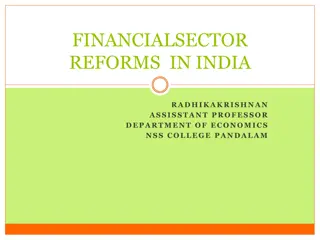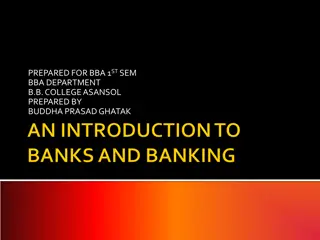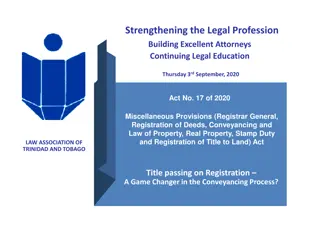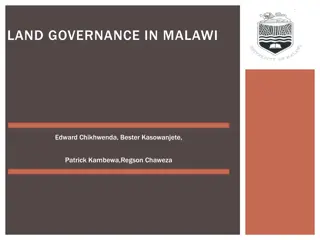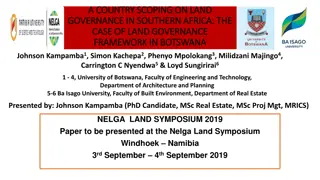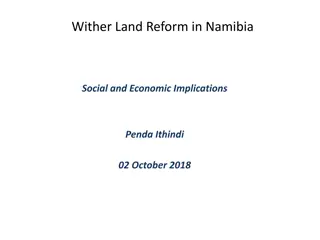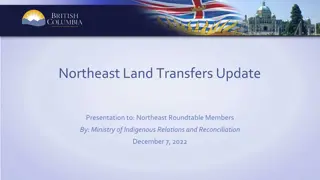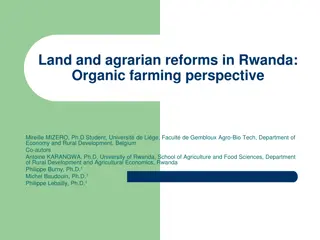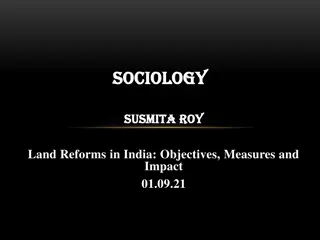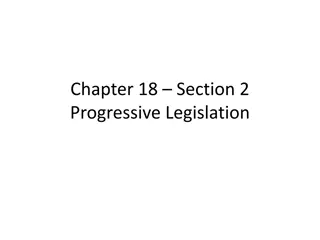Evolution of Land Reforms in India
The historical transitions of land ownership in India from community control to colonial rule, emergence of tenants post Land Settlement Act, and post-Independence land reforms for redistribution and social equality.
Download Presentation

Please find below an Image/Link to download the presentation.
The content on the website is provided AS IS for your information and personal use only. It may not be sold, licensed, or shared on other websites without obtaining consent from the author.If you encounter any issues during the download, it is possible that the publisher has removed the file from their server.
You are allowed to download the files provided on this website for personal or commercial use, subject to the condition that they are used lawfully. All files are the property of their respective owners.
The content on the website is provided AS IS for your information and personal use only. It may not be sold, licensed, or shared on other websites without obtaining consent from the author.
E N D
Presentation Transcript
Land reforms in India Land reforms in India Department of Economics Bapatla College of Arts & Science
Land Land is considered as an important element of life and is highly valued in most of the world. Land is useful to man in many ways as a source of food, for place to live, for wood, for place to work etc., In India , Before colonial rule the land used to be in the hands of the community as a whole . However during the British Raj this has changed. Lord Carnwallies has introduced Permanent Land Settlement for Bengal, Bihar and Orissa in 1793. According to this the tax farmers appointed by the British rulers will be converted as various Land Lords. Under this rule they have to pay fixed commission to East India Company. Thus these intermediary are formed, called as Jagirdars / Jamindar.
Emergence of Tenants Following the Land Settlement Act, 1793, The farmers purchase lands from the Land Lords and hire it for their agricultural use. These people who hired the land are called Tenants. Variations in Tenancy Cash Tenants : They pay a fixed tax for the use and occupy of the land Share cash Tenants: They pay part of their rent in cash and other part as share of the crop Crop - share Tenants : They pay a share of crops only Croppers : They pay crop of the share. But they are not independent they work under the landlord. Other unspecified tenants: Land Lord Tenant Relationships Land lord Tenant Landlord Agricultural Labour
Tenancy Systems : Ryotwari : This existed in Madras since 1772. And extended to Bombay Presidency. Under this system., every registered holder of the land is considered as proprietor. He paid revenue directly to the government and is having liberty to sell / lease / gift the property to any one. Mahalwari: The land ownership is held as joint ownership with the village body. The land can be cultivated by tenants who can pay cash / kind / share. Jamindari: Under this system the whole village was under one landlord. The persons interested can work in the jamindars land as tenant / labourer based on the agreement with the jamindar. The jamindari system was known to be more exploitive, as the jaminder used to fix / hike the prices of land when ever he wished to do so. Jagirdari: Almost as similar as Jamindari system. The jagirdar is powered to control the unproductive masses of village by engaging them in agrarian activities
LAND REFORMS After India Independence, the government has decided to abolish the systems of Jamindaris and Jagirdari, in order to remove intermediaries between state and peasant. This was the first legislation taken by almost all the states called as Abolition of Jamindari / Jagirdari systems Act. In 1950s. The main objectives of the Land Reforms are To make redistribution of Land to make a socialistic pattern of society. Such an effort will reduce the inequalities in ownership of land. To ensure land ceiling and take away the surplus land to be distributed among the small and marginal farmers. To legitimize tenancy with the ceiling limit To register all the tenancy with the village panchayats To establish relation between tenancy and ceiling
Access to Land Reforms Gandhian Approach: The Sarvodaya movement of Mahatma Gandhi Talks more about the universal upliftment. Inspired by Gandhism, Vinoba Bhave has started the Gram dam movement. This movement approached the landlords to donate to surplus to the landless / marginalized farmers. 2. The radical nationalist approach: Has been formally adopted by most of the state governments, however this approach couldn t contribute much. 3. The Marxist approach has been taken into account and is supported in the wake of peasant movements
Outcomes of Land Reforms 1. Abolition of Jamindars and Jagirdars The powerful Jamindars and Jagirdars have become extinct The abolition of intermediaries have ceased exploitation Transfer of land to peasants from intermediaries have reduced inequalities The new proprietorship has given scope for innovation in Land Reforms The ex-jagirdars and ex-Jamindars have engaged themselves actively in other work thus contributing for National Growth The abolishment of these systems have multiplied to the new land owners thus adding revenue to the state governments.
2. Land Ceiling Land is a source of Income: In rural India land provides employment opportunities. There fore its important for the marginal farmers, agricultural laborers, and small farmers. Land Ceiling should be imposed on all kinds of lands: The land of different types : 1. Fallow 2. Uncultivable 3. irrigated and 4. Cultivable land. All the mentioned are inclusive of ceiling Act. Ceiling on irrigated and two crops a year: The ceiling act varies from state to state on ceiling on two crops a year land. However in most of the places the ceiling is 18 Acres. Anything above has to be taken by the respective state government. Ceiling on irrigated and one crop a year: A peasant is eligible to have 27 acres of one crop a year land. Any land above the mentioned is declared surplus and taken over by the state government. Ceiling upto 54 acres: Peasants can have other different kinds of land which are to be used for cultivation until 54 acres. 3. Land possession and social power It has been increasingly realized that the land is not only the source of production but also for generating power in the community. More capable more land
Legitimization of tenancy In the Indian system the land is often transferred from one generation to another generation. However all this lack the documentation of possession of land. In this given context, the government had made it mandatory to register all tenancy arrangements . Land as a private property Lands are now owned as a private property Failures of Land Reforms State side with big farmers Big Farmers corner the lad of marginalized farmers Surplus Land is always fallow and uncultivable Benami Transactions Lack of Political Will
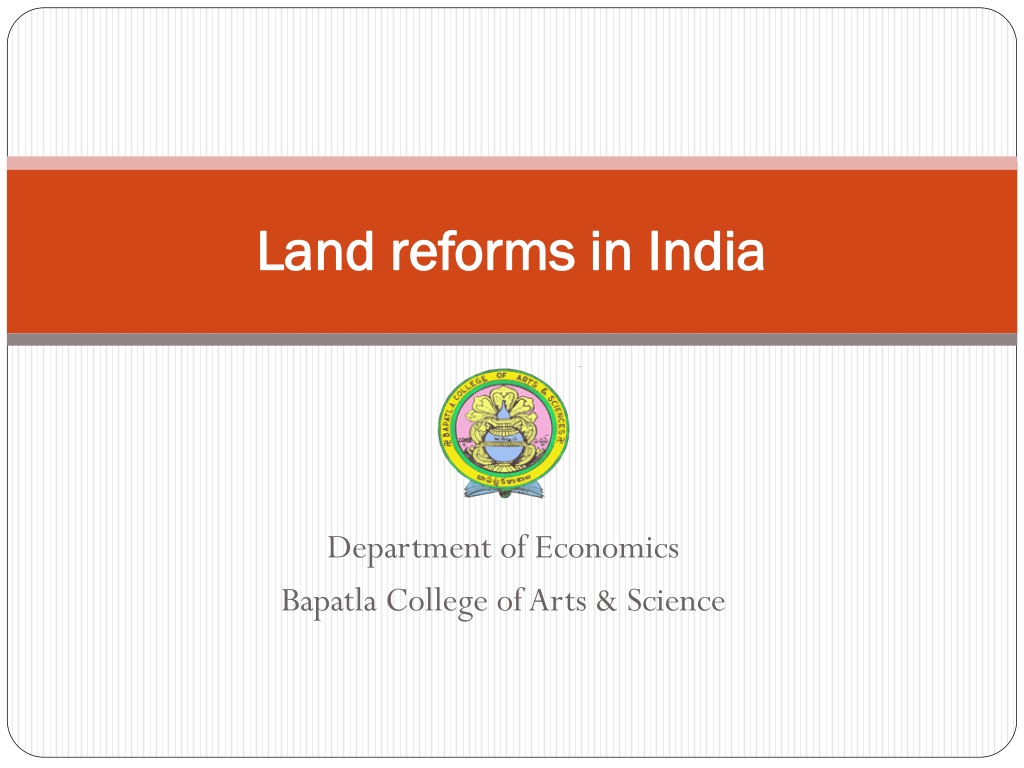
 undefined
undefined









